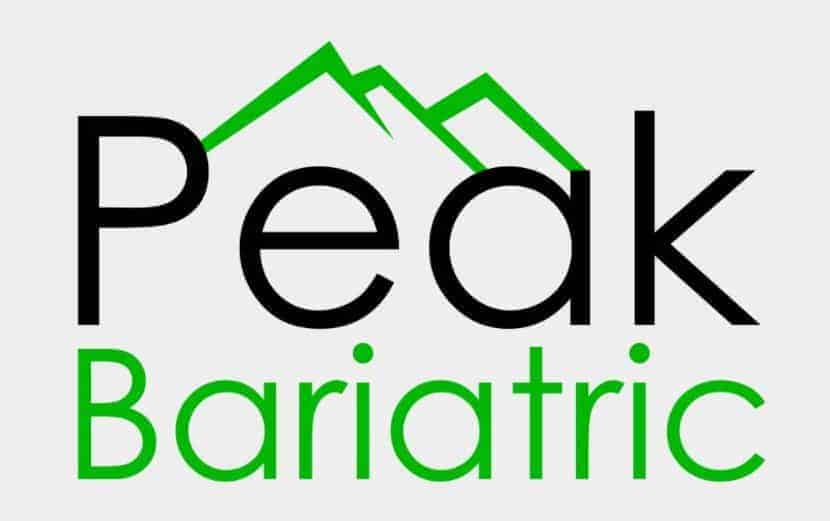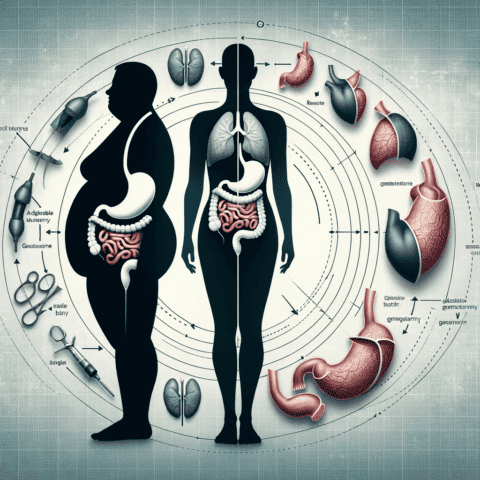Obesity has become an epidemic, with over 40% of adults in the United States considered obese. Carrying excess weight can increase the risk for many other health issues like heart disease, diabetes, high blood pressure, sleep apnea, and even some types of cancer. Because of this, many people turn to weight loss solutions for health and wellness. Traditionally, bariatric surgery has been viewed as the most effective approach for significant weight loss in obese patients. However, newer non-surgical weight loss treatments (NWLTs) provide alternatives that are less invasive and come with fewer risks compared to surgery.

What are Non-Surgical Weight Loss Treatments?
Non-surgical weight loss treatments aim to help patients lose weight through methods other than surgery. Some common examples include making lifestyle changes like improving your diet and increasing physical activity, taking prescription weight loss medications, undergoing minimally invasive procedures, or using body contouring techniques like fat freezing. Compared to weight loss surgery, non-surgical options are generally:
- Less expensive
- Less risky with fewer complications
- Require shorter recovery times
- Offer a gentler, gradual approach to losing weight
In recent years, there’s been growing interest in these non-surgical weight loss solutions. With newer procedures and technology, many patients can achieve double-digit weight loss percentages without the need for surgery. However, not all treatments produce the same level of weight loss. Talking to a medical professional can help determine the right options tailored to your needs that provide optimal safety and effectiveness.
Categories of Non-Surgical Weight Loss Treatments
There are five main categories of non-surgical weight loss options:
1. Lifestyle Changes
Making healthy lifestyle adjustments to your daily habits can go a long way towards losing weight sustainably. This includes:
Healthy Eating Patterns
- Following an evidence-based diet that focuses on balanced, nutrient-dense meals in appropriate portion sizes. Popular options include Volumetrics and the Mediterranean diet.
- Working with a registered dietitian or nutritionist for personalized meal planning and accountability
- Learning mindful eating techniques to savor food and listen to hunger signals from your body
Increased Physical Activity
- Getting the recommended 150-300 minutes per week of moderate-intensity activity like brisk walking or swimming
- Adding 2-3 strength training sessions per week for metabolism-boosting muscle
- Tracking activity with fitness trackers and workout apps for motivation
Behavioral Therapy
- Identifying negative thought patterns towards food and exercise with cognitive behavioral therapy (CBT)
- Developing healthy coping strategies for stress rather than emotional eating
- Adjusting unrealistic expectations about weight loss pace and aiming for 1-2 lbs per week
The Look AHEAD clinical trial found that overweight patients receiving intensive lifestyle intervention achieved 9.2% weight loss after one year compared to 0.3% for those only receiving diabetes support and education. For long-term success managing your weight, consistent lifestyle changes enable you to maintain new healthy habits.
2. Medications
Prescription medications provide additional assistance with appetite control and fat absorption when combined with lifestyle adjustments. Under a doctor’s supervision, these may help patients struggling to lose those last stubborn pounds.
Appetite Suppressing Medications
- Phentermine – can result in 5-10% weight loss after 6-12 weeks but intended only for short-term use
- Liraglutide (Saxenda) – newer GLP-1 injection indicated for chronic use and up to 10% weight loss
- Naltrexone/bupropion (Contrave) – tablet that helps control cravings and hunger cues
Fat Absorption Medications
- Orlistat (Xenical, Alli) – minimizes fat absorption by 30% but can cause digestive side effects
Contrave and Saxenda clinical trials found significant weight loss after 56 weeks compared to placebo — 5% and 8% respectively. However, medications may result in side effects or interactions with other drugs. Ongoing medical appointments evaluate effectiveness and safety.
3. Endoscopic Procedures
Endoscopy utilizes small cameras and tools inserted through your mouth without any external cuts. This field developed several minimally invasive bariatric procedures to reshape or reduce stomach capacity including:
- Intragastric balloon – filled balloon placed temporarily in your stomach so you feel fuller faster
- Endoscopic sleeve gastroplasty (ESG) – uses sutures to reduce stomach size similar to surgery
- Aspiration therapy – FDA-approved device empties 30% of each meal to prevent calorie absorption
These are outpatient procedures with 1-4 weeks recovery time. On average, patients lose 10-15% body weight over 6-12 months following treatment. They carry low risk of complications plus enable most patients to stop stomach acid reflux medications long-term. However, weight regain is still possible without lifestyle adjustments.
4. Body Sculpting Procedures
Devices utilizing cryotherapy, ultrasound, or radiofrequency technology break down fat cells in specific body areas without incisions or needles. Sessions typically last 30-60 minutes with no downtime afterward.
- CoolSculpting – freezes fat cells through controlled cooling panels applied to the body. Most patients start noticing results around 3 weeks following treatment.
- Ultrasound cavitation– soundwaves create microbubbles to disrupt fat cell membranes with no heat or radiation
- Radiofrequency lipolysis – generates heat targeting fat cells and also tightens skin over time
Body sculpting achieves up to 20-25% fat layer reduction per treatment area. However, these treatments only remove small, localized fat deposits rather than treating large volumes. Some mild swelling, numbness or discomfort is possible afterward but usually resolves within a few days.
5. Supplements and Alternative Therapies
Certain over-the-counter pills and holistic treatments claim to amplify weight loss too but have minimal evidence about effectiveness right now. Since the FDA doesn’t regulate these products, safety is unclear. Examples include raspberry ketones, bitter orange, chromium picolinate and even apple cider vinegar pills. Probiotics demonstrate potential by improving gut health and metabolism regulation. Acupuncture allegedly helps balance energy, decrease stress, improve detoxification and reduce food cravings. But additional large, rigorous studies are necessary to demonstrate if these alternatives make any meaningful difference for obesity.
Developing a Personalized Weight Loss Plan
Since every patient comes with a unique situation, there is no “one size fits all” solution for managing your weight. You should develop an individualized plan catered to your health profile and weight loss goals through shared decision making with your bariatric healthcare team. This starts by calculating your BMI and assessing current habits. From there, options get incorporated targeting specific barriers preventing you from losing weight.
Customization also continues through the weight loss process with frequent check-ins to monitor progress and adjust parts not working. Patients might combine prescription medications with meal planning plus body sculpting sessions for optimal results. Open conversations between you and your providers allow adapting as new challenges appear to keep you on track long-term.
Managing Expectations About Non-Surgical Weight Loss Treatments
The amount and pace of weight loss possible with non-surgical options tends to less compared to bariatric surgery but so do the procedural risks and recovery times. Patients can expect losing anywhere from 5-15% of their body weight over 6-12 months following a nonsurgical weight loss program. But the more invasive alternatives promise weight loss between 20-40% in the months following surgery.
Improving your relationship with food through behavioral changes enables keeping weight off rather than temporary quick fixes bringing it right back. Consistency remains key with making healthy choices daily, not just periodically attempting popular fad diets. Accountability to your care team and support system boosts motivation on harder days. While surgery promotes rapid results, without fundamental lifestyle shifts maintenance suffers. Equally important is giving your body and mind sufficient time to adjust to new eating patterns, activity levels and thought processes without self-judgment.
The Future of Non-Surgical Weight Loss Treatments
As obesity rates climb globally, demand rises for safer, less costly weight loss alternatives that maximize patient comfort. Exciting solutions in testing right now attempt activating brown fat signaling through capsinoids like capsicum found in chili peppers. Recent research discovered our bodies naturally house energy-burning brown fat stores most prevalent during infancy. Trials use topical creams or pills trying to switch white fat back to brown fat by targeting the irisin hormone.
Gut microbiome connections to weight gain also show encouraging potential. Transferring healthy intestinal bacteria to those with poor microbial diversity improves insulin sensitivity and reduces fat production signals in early studies. Fecal microbiota transplant (FMT) trials aim to essentially re-balance digestive function. Advanced computational models integrate your genetic risks, diet, sleep patterns and more to deliver ultra-personal action plans. More algorithms get developed predicting individual weight loss success rates with specific program combinations too. Ultimately multi-faceted solutions blending the emerging innovations discussed hold the greatest promise moving forward.
In Conclusion
Losing a few pounds here and there fails to resolve longstanding obesity and associated health risks. Through accessible non-surgical treatments, patients now enjoy effective options minus the steep costs, recovery times and complications accompanying surgery. Realistic expectations around gradual steady loss followed by weight maintenance present far superior outcomes over repeated crash dieting and frustrating rebounds. Partnering in your care while adopting stepwise habit changes leads to manageable, sustainable transformation. If non-surgical methods still prove insufficient, revisiting surgical routes may become necessary as a last resort. Stay proactive optimizing your physical and mental wellbeing by exploring the growing nonsurgical possibilities tailored around your unique needs.






